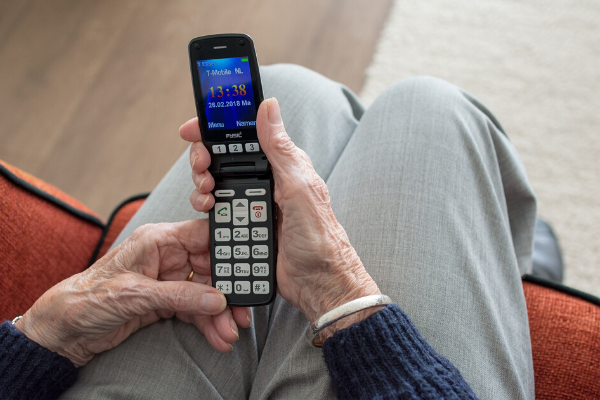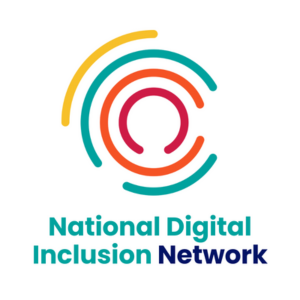Insights
INSIGHTS
All Topics
How to include the digitally excluded
10 Jul 2020by Raabia Fazil
As lockdown reveals the extent of the digital divide, charities are examining how to include the digitally excluded
Going online is straightforward for a lot of people. However, research shows that access to digital tech is not the norm for everyone, leading to digital exclusion. Charities are seeking to find out how to include the digitally excluded.
The research makes for sobering reading:
- 9 million people have never accessed the internet
- 27% of people with disabilities, 3.3 million people, have never accessed the internet
- 75-90% of jobs need some computer use
- Offline homes could save up to £560 annually by shopping online and paying bills online
There are several factors preventing people from accessing digital tech, from the costs involved, to perceptions of difficulty. With the advent of sophisticated devices across the landscape, digital tech can seem intimidating, too.
For the charity sector, digital exclusion is particularly concerning. As charities use digital tech to help vulnerable people, if they cannot reach the digitally excluded, they are unable to support the people that most need their services. Being digitally excluded can prevent such users from receiving vital support. On the frontlines, crossing the digital divide and reaching digitally excluded people has been life-changing for service users, helping them to find homes, jobs and more.
The effect of lockdown
Digital exclusion has especially come to the forefront during lockdown. As people have transitioned to working and teaching children at home, stark realities have emerged for some families.
For charities working with people on the front lines, such as refugees, the homeless and more, being unable to access services in person has left people stranded. As lockdown has extended across the country, people have been unable to attend appointments for healthcare or assessments for support. Being unable to leave home has left victims of domestic violence in the grip of their abusers. Mental health charities have revealed the damaging effect of lockdown on people experiencing conditions such as anxiety, depression and more. As many charities offer drop in centres with WiFi, people on the frontlines have lost crucial access to online support. With school closures, students have lost a haven for educational opportunities.
In Swindon, Michelle Holgate’s six children had been sharing one phone for schoolwork. She had assigned each child an hour on the phone to complete their work, causing stress and fear about failing their subjects. The family received a donated tablet which "made a big difference" to their circumstances and the children can now “produce better work”. Research from Lloyd Bank revealed that almost a million children and young people have limited access to digital tech at home.
Tech for good, tech for all
Considering such stark news and difficult realities, charities are working to improve the situation by changing the landscape. The Good Things Foundation is rolling out the Connecting Families programme this summer. It is intending to supply over 2000 devices, internet access and support to disadvantaged that would traditionally be digitally excluded.
Good Things Foundation have already helped over 400 families with devices and internet access to access essential services digitally. The initiative has helped families to access food vouchers online and more.
Access to affordable tech is proving vital for charities to reach and support their service users. Working to include the digitally excluded has been particularly transformative for some charities in the wake of the pandemic.
Extending services enormously
At the beginning of lockdown, going digital was intended as a temporary measure for several charities. Although, many charities have found that moving online has extended their reach and allowed them to help more people, more extensively and save money, too.
Soundabout, a charity using music to help people with severe learning disabilities, has discovered greater demand for their work online than in the physical world. Prior to the pandemic, the charity helped groups of eight people, with their carers, in face-to-face sessions. They have harnessed the power of Facebook Live to reach over 12000 people, vastly increasing their reach and profoundly extending their ability to help people.
Scunthorpe and District Mind have found that remote video has been hugely beneficial to them, too. Remote video sessions have enabled them to help many more people, essentially reaching people in rural areas that might otherwise have struggled to access help and support.
One of the largest effects of lockdown has been people being isolated from accessing support in person. By harnessing the power of digital tech, these charities have transformed their operations and changed the lives of their service users.
Widening horizons
Multiple charities have been including people that would traditionally be digitally excluded by pioneering innovative solutions. Whereas most digital services require users to learn new skills on their own, and can be intimidating, Age UK are using their digital platform to provide free guides for older people. They have adapted their services for older people to embrace digital tech in a way that is most relevant for them.
Despite high numbers of digital exclusion, charities are embracing digital tech in innovative ways to reach their service users. With support from the government and the launch of new schemes to get digital tech to traditionally digitally excluded people, charities can continue their good work and champion progress both online and offline.
Raabia Fazil
More on this topic
Recommended Products
Recommended Products
15 Jan 2025by kirsty marrins
AI and the future of service delivery
14 Jan 2025by Josie Sparling
How digital access challenges impact charities and service users
13 Jan 2025by Ioan Marc Jones
An A-Z glossary of service delivery terms and definitions
Our Events
Charity Digital Academy
Our courses aim, in just three hours, to enhance soft skills and hard skills, boost your knowledge of finance and artificial intelligence, and supercharge your digital capabilities. Check out some of the incredible options by clicking here.



















